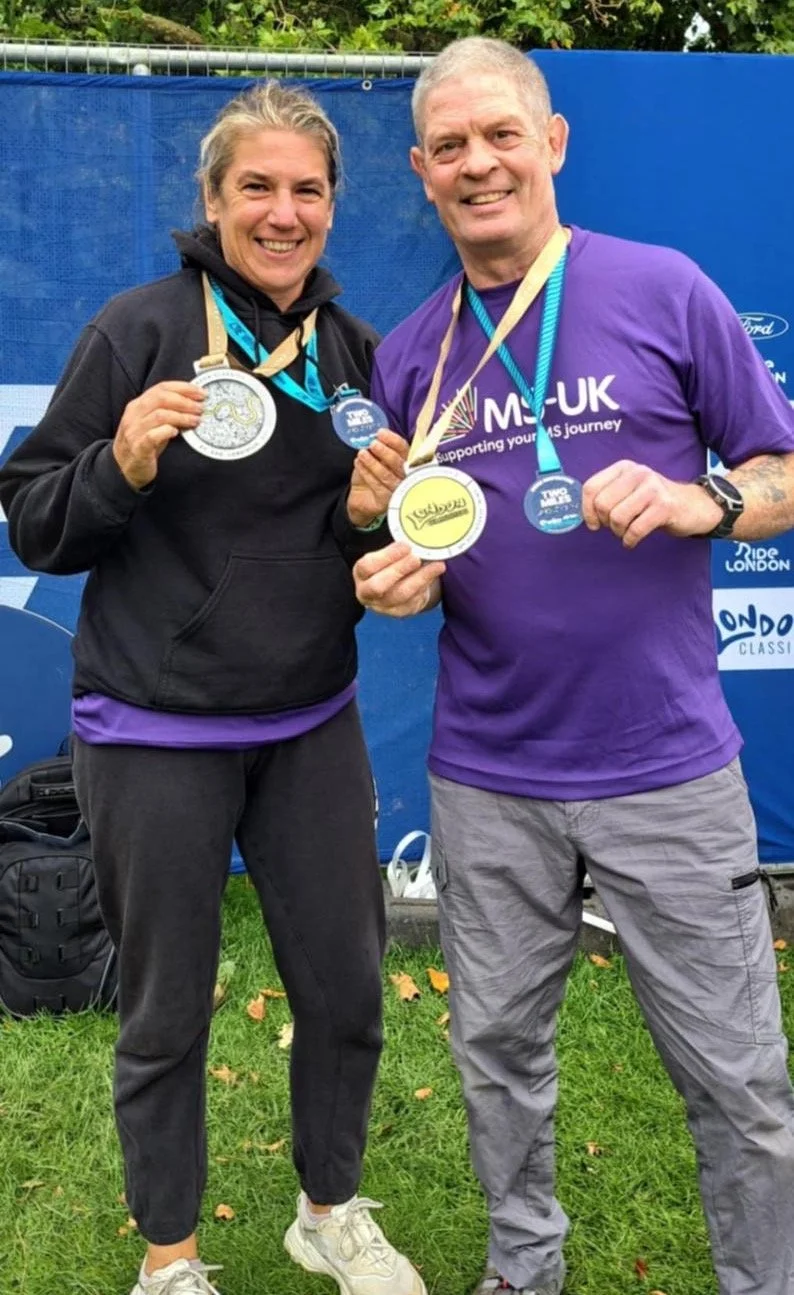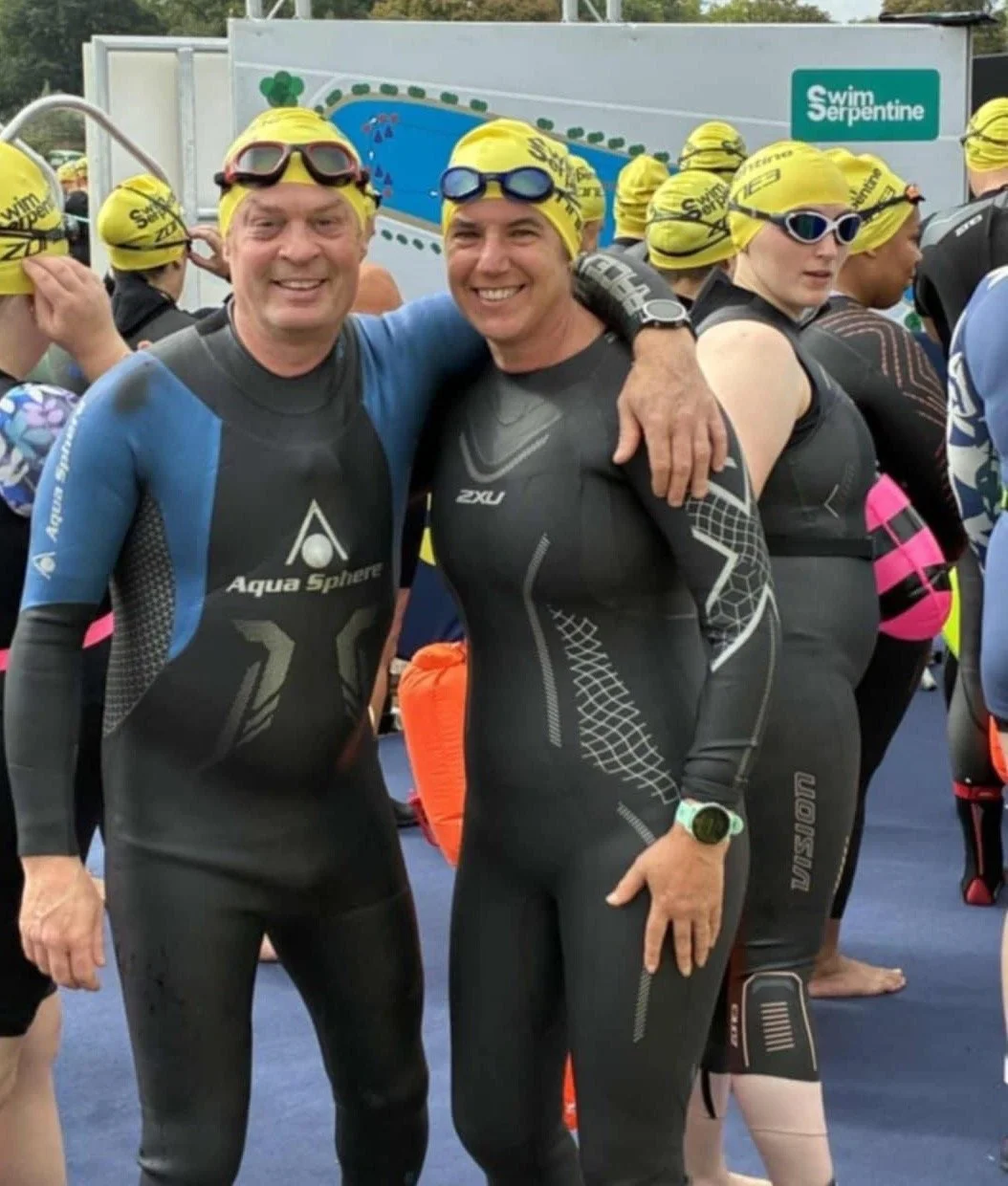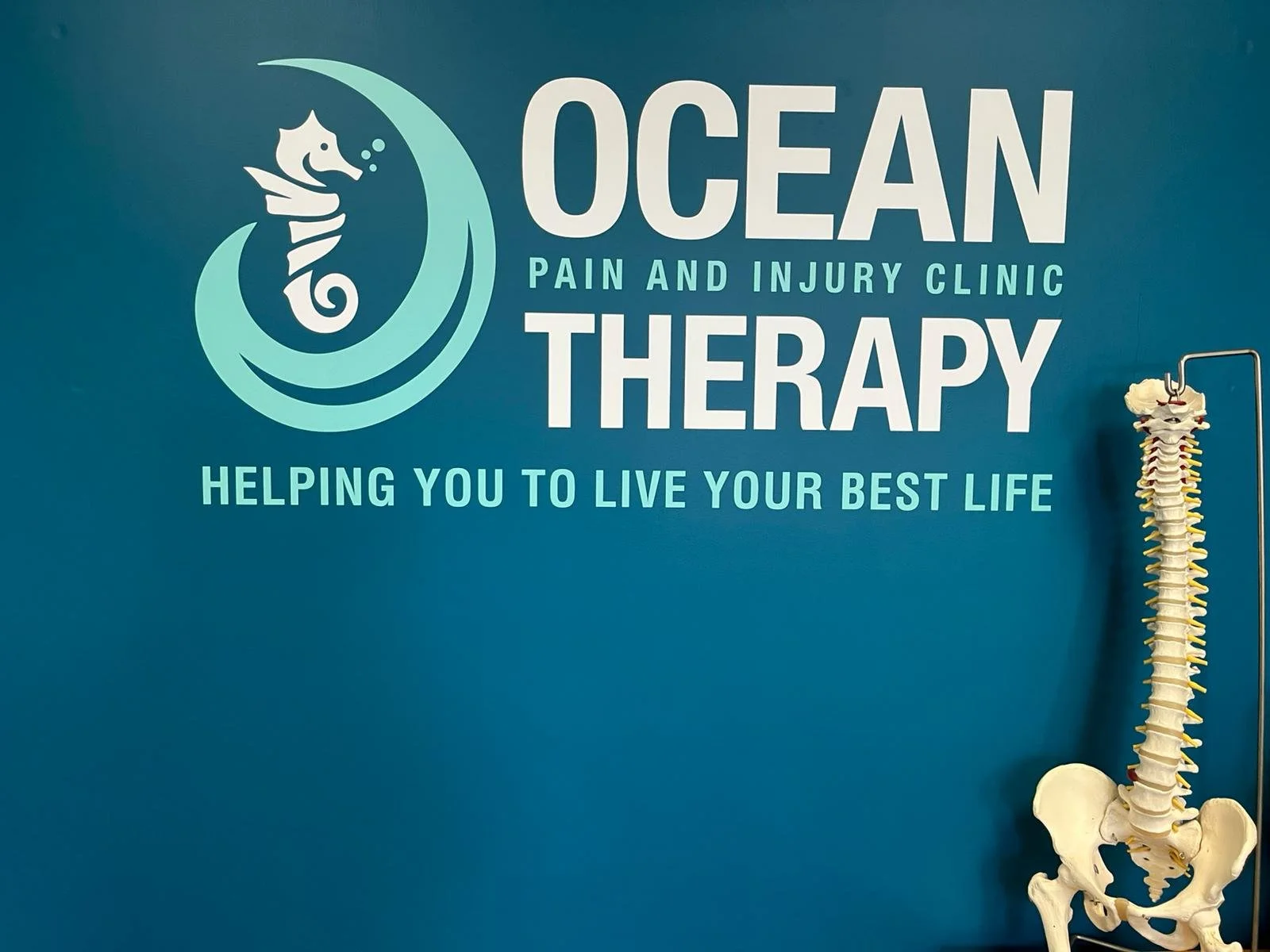
October 2025 Newsletter.
Welcome to our newsletter, with all our updates and some helpful resources for you. In this edition we talk about Menopause and Musculoskeletal conditions.
Remember, we are here to help you and you can contact us anytime.
Welcome to our
October newsletter
Hello Folks, welcome to our October newsletter,
Welcome to our October edition! Well since we last gathered our previous content, we were enjoying a beautiful very warm August basked in what seemed like relentless sunshine, and no rain, well things have changed! The nights are now drawing in, its dark till 06.45 and I have felt like I have needed gloves on my first dog walk of the day, plus I haven’t had to water my garden for a few weeks!!
Autumn has certainly arrived; the leaves are falling there is a nip in the air and those long endless sunny days are a memory in our pocket!!
It’s been an amazing summer and I have personally enjoyed being outside as much as possible however this week I returned to the indoor pool for some more serious training whilst last week Boris and Claire donned their wetsuits for London’s ‘Swim Serpentine’ challenge…. here’s what they had to say….
Conquering the swim Serpentine- and earning our London Classics medal last Saturday was a truly special day for Claire and I. We took part in the challenge -which consists of a 2-mile open water swim in London’s iconic Hyde Park Lake. It wasn’t just about the challenge, it was about raising money for a cause close to our hearts, MSUK, and we are delighted to say that we raised over £600 in support. MSUK matters to me personally, as a trainer for over 25 years, I have had the privilege of working with many clients living with Multiple Sclerosis. I have seen first-hand the challenges they face, but also the incredible strength and determination they bring to every session.
My role has often been to help them move better and keep their bodies working as well as possible. Supporting MSUK has felt like a natural extension of that journey, a way of giving back and helping to raise awareness and funds for the wider MS community. On the big day the weather couldn’t have been better – bright fresh and perfect for a swim. The event itself was brilliantly organised with plenty of support, energy and encouragement all around. There were swimmers of every level, and it was great to share the water with so many enthusiastic people.
We took the race at our own pace, enjoying the experience as much as the challenge. I finished the race in 1 hour 23 mins, and Clare in 1 hour 23 mins, however it was all about the atmosphere, the camaraderie, and the feeling of achievement.
The charity and the community looked after us so well, and it was inspiring to meet other swimmers supporting so many different charities. Having already completed the ride London and the London Marathon, having now completed the serpentine swim meant we had now finished the full set, earning the coveted London Classics medal. Receiving it was a real milestone for both of us and made the day even more memorable. Personally, this was a chance to give back to the community, reminding me of all the people that I have been fortunate enough to work with over the last 25 years. It was a reminder of how sport, community and a little determination can come together to make something truly meaningful.
We have also been busy with more domestic projects within the clinic. We have made a feature wall in the clinic featuring our logo which we will use as a backdrop to our videos which we will add to the website…. watch this space!
We are very pleased with it, thanks to swift signs Weymouth they come highly recommended!
Now this month we are going to feature the menopause and are going to highlight how it effects Musculoskeletal conditions. We see these in the clinic very often and as a female of a certain age I am very well informed about the menopause and all that it means to us. Symptoms vary widely from individual to individual, with more of the common symptoms taking he limelight, but less is known about the effects the menopause has on our musculoskeletal system and this is something we thought might be of interest to our patients (and maybe their husbands!) We have also included some helpful patient resources to the newsletter (featured at the bottom of the page) hope you find it all useful.
I have also included a piece on Acupuncture Electro Stimulation. I am using this modality quite often in the clinic independently or in combination with soft tissue treatments and or Cupping. I am having some great results, some of you have enquired about its use and how it works, so I thought I would feature E stim this month ( it’s a real bit of magic that we can bring to the table if you respond well to Acupuncture, this may be something that will appeal to you) For your information please note that Acupuncture sessions are now £60.
Menopause and Your Musculoskeletal Health: Understanding the Changes
Why Hormonal Transitions Affect Your Bones, Muscles, and Joints
The Hidden Impact of Menopause
While hot flashes and mood changes are well-known symptoms of menopause, one of the most significant but often overlooked effects occurs in your musculoskeletal system. The hormonal changes during menopause create a cascade of effects that impact your bones, muscles, joints, and connective tissues in ways that can dramatically affect your quality of life.
Understanding these changes empowers you to take proactive steps to maintain your strength, mobility, and independence as you age.
What is Musculoskeletal Syndrome of Menopause?
Medical researchers now recognize a condition called "Musculoskeletal Syndrome of Menopause" - a collection of symptoms that affects up to 80% of menopausal women. This syndrome includes:
• Joint pain and stiffness (arthralgia)
• Rapid muscle mass loss (sarcopenia)
• Bone density reduction (osteopenia/osteoporosis)
• Decreased flexibility and range of motion
• Increased susceptibility to injury
• Changes in body composition (increased fat, decreased muscle)
• Reduced physical strength and endurance
The Hormone Connection: Why Menopause Changes Everything
Estrogen's Crucial Role
Estrogen isn't just a reproductive hormone - it's a powerful protector of your musculoskeletal system:
For Your Bones:
• Maintains bone density by regulating bone-building cells (osteoblasts)
• Prevents excessive bone breakdown by controlling bone-resorbing cells (osteoclasts)
• Supports calcium absorption and vitamin D metabolism
• Maintains bone microarchitecture - the internal structure that gives bones strength
For Your Muscles:
• Stimulates muscle protein synthesis - the process of building new muscle tissue
• Protects against muscle breakdown during periods of inactivity
• Maintains muscle fiber quality and contractile strength
• Supports muscle stem cell function for repair and regeneration
• Regulates muscle metabolism and energy production
For Your Joints and Connective Tissues:
• Maintains cartilage health by supporting chondrocyte (cartilage cell) function
• Promotes collagen production in ligaments, tendons, and joint capsules
• Supports synovial fluid production for joint lubrication
• Maintains elasticity in connective tissues
Other Hormonal Players
Testosterone: Also declines during menopause, further contributing to muscle loss and reduced bone density.
Growth Hormone and IGF-1: Decrease with age and menopause, reducing muscle protein synthesis and bone formation.
DHEA (Dehydroepiandrosterone): Drops significantly, affecting muscle mass and bone health.
The Timeline: When Changes Begin
Perimenopause (Ages 40-51):
• Estrogen fluctuations begin causing irregular symptoms
• Initial bone loss starts (1-2% per year)
• Muscle changes may begin but are often subtle
• Joint stiffness may appear, especially in the morning
Menopause (Average Age 51):
• Dramatic estrogen decline accelerates all changes
• Rapid bone loss (up to 3-5% per year for the first 5 years)
• Accelerated muscle loss (1-2% per year becomes the norm)
• Joint pain and stiffness become more pronounced
Post-Menopause:
• Continued gradual decline in bone and muscle mass
• Increased fracture risk becomes significant
• Functional limitations may develop without intervention
• Sarcopenia (severe muscle loss) may occur
The Cascade Effect: How One Change Leads to Another
The Bone-Muscle Connection
• Weaker muscles place less stress on bones, accelerating bone loss
• Reduced bone density affects muscle attachment points, reducing muscle efficiency
• Both changes together dramatically increase fall and fracture risk
The Joint Impact
• Muscle weakness reduces joint stability
• Hormonal changes affect cartilage health directly
• Reduced activity (due to pain/weakness) accelerates joint stiffness
• Weight gain (common during menopause) increases joint stress
The Activity Spiral
• Pain and stiffness reduce physical activity
• Reduced activity accelerates muscle and bone loss
• Weakness and instability further reduce confidence in movement
• Sedentary lifestyle worsens all symptoms
Specific Musculoskeletal Changes
Bone Changes:
• Rapid bone mineral density loss: 1-3% per year initially, then 1% per year ongoing
• Microarchitecture deterioration: Bones become more porous and fragile
• Increased fracture risk: Hip, spine, and wrist fractures become 2-3x more likely
• Height loss: Spinal compression fractures can cause loss of height
Muscle Changes:
• Sarcopenia acceleration: Loss of 3-8% of muscle mass per decade after menopause
• Type II fiber loss: Fast-twitch muscle fibers (for power and strength) are particularly affected
• Intramuscular fat infiltration: Muscle quality decreases as fat replaces muscle tissue
• Reduced muscle strength: Can decline 1.5-3% per year
• Slower recovery: Muscles take longer to repair after exercise or injury
Joint and Connective Tissue Changes:
• Cartilage thinning: Especially in weight-bearing joints (knees, hips, spine)
• Reduced synovial fluid: Leading to increased friction and stiffness
• Ligament and tendon changes: Decreased elasticity and increased injury risk
• Inflammatory changes: Increased joint inflammation even without injury
Why Some Women Are Affected More Than Others
Risk Factors for Severe Changes:
• Early menopause (before age 45)
• Surgical menopause (hysterectomy with ovary removal)
• Family history of osteoporosis or fractures
• Low body weight or history of eating disorders
• Sedentary lifestyle before and during menopause
• Smoking and excessive alcohol consumption
• Poor nutrition (low calcium, vitamin D, protein)
• Certain medications (steroids, some antidepressants)
• Medical conditions (thyroid disorders, rheumatoid arthritis)
Protective Factors:
• Regular weight-bearing exercise throughout life
• Adequate nutrition with sufficient protein, calcium, and vitamin D
• Healthy body weight maintenance
• Strong social support and active lifestyle
• Early intervention with appropriate treatments
The Body Composition Shift
What Happens:
• Visceral fat increases: Fat accumulates around organs, affecting metabolism
• Muscle mass decreases: Leading to a slower metabolic rate
• Fat distribution changes: More weight around the midsection
• Overall weight gain: Average of 5-10 pounds during menopausal transition
Why This Matters:
• Increased disease risk: Higher rates of diabetes, heart disease, and stroke
• Joint stress: Extra weight accelerates joint wear and tear
• Mobility challenges: Changes in body composition affect balance and coordination
• Psychological impact: Body image changes can affect mental health and activity levels
The Inflammation Connection
Menopause and Chronic Inflammation:
• Estrogen's anti-inflammatory effects are lost during menopause
• Inflammatory markers increase: IL-6, TNF-α, and C-reactive protein levels rise
• Joint inflammation worsens: Leading to pain and stiffness
• Muscle breakdown accelerates: Inflammation promotes muscle protein breakdown
• Bone resorption increases: Inflammatory cytokines stimulate bone-destroying cells
Long-Term Consequences Without Intervention
Fracture Risk:
• 1 in 2 women over 50 will experience an osteoporotic fracture
• Hip fractures carry a 20% mortality risk within one year
• Spine fractures can cause chronic pain and disability
• Wrist fractures often signal the beginning of osteoporotic changes
Functional Decline:
• Difficulty with daily activities: Climbing stairs, lifting objects, maintaining balance
• Increased fall risk: Weakness and poor balance lead to dangerous falls
• Loss of independence: May require assistance with basic activities
• Reduced quality of life: Pain and limitations affect enjoyment of activities
The Frailty Syndrome:
Untreated musculoskeletal changes can progress to frailty - characterized by:
• Unintentional weight loss
• Physical exhaustion
• Weakness (poor grip strength)
• Slow motor performance
• Low physical activity
Hope and Solutions: What Can Be Done
The Good News:
• These changes are largely preventable with the right interventions
• Muscle can be rebuilt at any age with proper exercise
• Bone density can be maintained and even improved with treatment
• Joint health can be preserved with appropriate care
• Quality of life can be maintained throughout and after menopause
• Education and support to help you understand and manage changes
Evidence-Based Treatment Approaches
Exercise is Medicine:
Research shows that the right exercise program can:
• Increase bone density by 1-3% per year with weight-bearing exercise
• Build muscle mass by 2-4 pounds in 12 weeks with resistance training
• Improve balance and reduce fall risk by up to 25%
• Reduce joint pain and improve function in arthritis by 40%
• Enhance quality of life and reduce depression symptoms
Manual Therapy Benefits:
• Joint mobilization to maintain range of motion
• Soft tissue techniques to address muscle tension and trigger points
• Postural correction to prevent spinal problems
• Pain management through hands-on techniques
Integrated Approach:
The most effective treatment combines:
• Progressive resistance training
• Weight-bearing cardiovascular exercise
• Flexibility and mobility work
• Balance and coordination training
• Manual therapy as needed
• Education and lifestyle counseling
Take Action: Your Musculoskeletal Health Matters
The musculoskeletal changes of menopause are significant, but they don't have to define your future. With proper understanding, early intervention, and the right professional support, you can maintain your strength, mobility, and independence throughout the menopausal transition and beyond.
Don't wait until problems develop - prevention is always more effective than treatment.
References:
• Musculoskeletal Disorders and Menopause - PMC (National Center for Biotechnology Information)
• The Musculoskeletal Syndrome of Menopause - Clinical research studies
• European Working Group on Sarcopenia guidelines
• International Osteoporosis Foundation recommendations
This information is for educational purposes and should not replace professional medical advice. Always consult with qualified healthcare providers about your specific situation.
Electroacupuncture: The Enhanced Power of Traditional Healing
At Ocean Therapy Centre, we're proud to offer electroacupuncture - a modern enhancement to traditional acupuncture that combines the ancient wisdom of needle therapy with gentle electrical stimulation. This innovative treatment is revolutionizing pain management and healing.
What is Electroacupuncture?
Electroacupuncture involves inserting fine needles at specific acupuncture points and connecting them to a device that delivers mild electrical pulses. This controlled stimulation enhances the traditional benefits of acupuncture by activating the body's nervous system more effectively.
How It Works
Recent research shows that electroacupuncture works through multiple pathways:
• Blocks pain signals by activating various bioactive chemicals in the peripheral, spinal, and brain regions
• Triggers the release of natural pain-relievers including endorphins, serotonin, and norepinephrine
• Enhances healing by promoting the release of mesenchymal stem cells into the bloodstream
• Reduces inflammation by decreasing pro-inflammatory substances like TNF-α and various interleukins
Conditions We Successfully Treat
• Chronic pain conditions
• Sports injuries and muscle tension
• Arthritis and joint stiffness
• Headaches and migraines
• Post-surgical recovery
• Nerve-related pain (neuropathy)
Unlike traditional acupuncture, electroacupuncture stimulates larger areas around needle insertion points, creating more comprehensive therapeutic effects:
Scientifically Proven Mechanisms:
• Enhanced Pain Blocking: Activates multiple pain-relieving pathways in your peripheral nerves, spinal cord, and brain
• Natural Healing Response: Triggers the release of your body's own pain-relievers including endorphins, serotonin, and norepinephrine
• Stem Cell Activation: Promotes the release of mesenchymal stem cells into your bloodstream to accelerate tissue repair
• Inflammation Reduction: Significantly decreases inflammatory markers that contribute to pain and swelling
• Improved Circulation: Enhances blood flow to treated areas, promoting faster healing
What to Expect During Treatment
Your First Session:
• Comprehensive consultation and assessment
• Explanation of your personalized treatment plan
• Comfortable positioning in our professional treatment rooms
During Treatment:
• Fine needles are gently inserted at specific therapeutic points
• A mild electrical current is applied through the needles
• Most patients experience a gentle tingling or mild muscle contraction
• Sessions typically last 20-30 minutes
• Many patients find the treatment deeply relaxing
The Sensation:
The electrical stimulation feels like a gentle pulsing or mild muscle twitching. The intensity is always kept within your comfort zone and can be adjusted throughout the session.
Sports & Injury Recovery:
• Muscle strains and tears
• Tendon and ligament injuries
• Post-surgical rehabilitation
• Sports performance enhancement
• Repetitive strain injuries
Specialized Conditions:
• Neuropathic pain
• Post-operative pain management
• Chronic fatigue syndrome
• Stress-related tension
Electroacupuncture is extremely safe when performed by qualified practitioners:
Is Electroacupuncture Right for You?
Ideal Candidates:
• Individuals with chronic pain conditions
• Those seeking drug-free pain management
• Patients wanting to enhance traditional treatments
• Anyone looking for evidence-based alternative therapy
Contraindications:
• Pregnancy (first trimester)
• Pacemaker or other electrical implants
• Certain heart conditions
• Active infections at treatment sites
Samantha will conduct a thorough assessment to ensure electroacupuncture is safe and appropriate for your specific situation.
Long-term Benefits:
• Increased muscle strength (up to 30% improvement in some studies)
• Enhanced muscle endurance
• Faster recovery from injuries
• Improved functional movement
• Reduced dependency on pain medications
Research-Backed Results:
• Studies show significant strength gains when E-Stim is combined with voluntary exercise
• Proven effective for quadriceps strengthening after knee surgery
• Demonstrated pain reduction in chronic conditions
• Enhanced athletic performance when used as training adjunct
• Complementary: Often used together for comprehensive treatment
Safety and Contraindications
E-Stim is Very Safe When Properly Applied:
• Non-invasive treatment
• No medication side effects
• Adjustable intensity for comfort
• Can be used alongside other treatments




